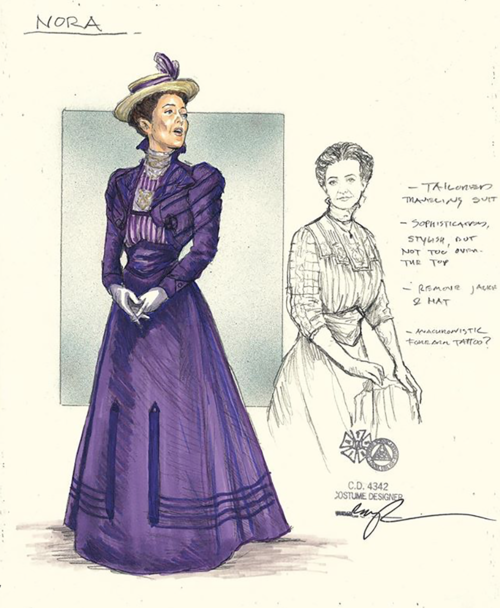A Look Behind the Scenes of A DOLL'S HOUSE, PART 2
Ever wonder about the creative process behind bringing to life a Jungle Theater production? After hours of research and pulling inspiration from history, colors, and more, our designers have created a truly stunning visual masterpiece. Take a look back at their original mock-ups and designs while learning more about their own individual creative processes that have lead to this vibrant production A Doll's House, Part 2.
FROM SCENIC DESIGNER
CHELSEA M. WARREN
The initial stages of this design process were a challenge, due to the show’s success in NYC which made me very aware of that initial scenic design. Additionally, last year I used the script in my scenic design class at the UMN, resulting in more design options in my head. In order to make our world for this production, Joanie and I dove into this creative team’s focus on the story: Hnath’s balance between Ibsen’s Victorian world and contemporary society.
The play speaks to the questions of where are we now, 141 years after the initial production of A Doll’s House. What is marriage today and what is freedom within a marriage? How different are gender roles within marriage today? Is Nora right, is the structure of marriage confining us? How can I define the arena which provokes these questions?
A large part of my process is gathering visual research which define my singular visual voice for the production. Major inspiration came from the architect David Adjaye’s Horizon (2007), Jenny Holzer’s art of projected contemporary text onto classic architecture, the decayed ruins of the Roman Forum and lastly the Victorian architecture of drawing rooms and entryways. Ultimately this mash up
lead to a deconstructed Victorian room projecting out into the audience counterbalanced by a heavy foundation at the perimeter. And of course, a portentous door.
FROM COSTUME DESIGNER
MATHEW J. LEFEBVRE
In approaching the design elements of A Doll’s House, Part 2, we focused on the sometimes-contradictory nature between the language of the play and the time in which the play is set. The events of this play take place 15 years following the end of Ibsen’s A Doll’s House, which would roughly place our play in 1896, however as you’ll see, Hnath’s language has a very 21st-century quality that we wanted to honor with the design.
We started with period-appropriate silhouettes, but looked for ways that we could interject a more contemporary vibe and include some anachronistic elements. For example, although Nora wears a dress of the late Victorian silhouette, the color and some of the fabrics have a more modern feel. As the play progresses, we might begin to notice other anachronistic elements such as a wristwatch, or a forearm tattoo. For the most part, these anachronistic “Easter eggs” are subtle, but some keen audience members might notice them and think they are mistakes. They are meant to support the characters within the new rules established in Lucas Hnath’s play.



